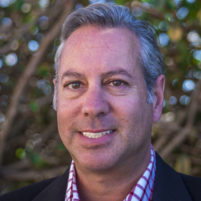Residents reject advice to fix El Campo crossing, demand overpass
April 2, 2019

Victor Lund
OPINION by VICTOR LUND
Highway 101 in southern San Luis Obispo County is flooded with traffic. Residents claim that San Luis Obispo Council of Governments (SLOCOG ) has failed to meet the obligation of pooling together the resources of San Luis Obispo County, CalTrans, and local cities to make the necessary improvements to handle growth. This failure has resulted in a dramatic increase in traffic accidents, caused countless lifelong injuries, and contributed to the the death of Cal Poly student, Jordan Grant.
The family of Jordan Grant has appealed to SLOCOG to close the dangerous intersection at El Campo Road and Highway 101 to improve safety. Jordan was struck while traveling southbound on Highway 101 at the El Campo crossing. The driver causing the accident did not see Jordan.
In response to the accident, SLOCOG commissioned a study to review many alternatives to improving safety at the intersection. SLOCOG published the results of that study and proposed closing three highway 101 crossings – El Campo, Laetitia Winery, and another unnamed crossing. South County residents are rejecting the proposal to SLOCOG citing non-compliance with the requirements under the California Environmental Quality Act (CEQA).
California has laws in place that require environmental studies when there are changes in the community that impact the system of roads. SLOCOG is in violation of this law if they proceed with this partial closing. The ad hoc study of impacts was limited to signaled intersections and only during 15-minute intervals during a small window of the day. Moreover, the study does not analyze the impact to evacuation routes in the event of a fire or Diablo Canyon emergencies.
Residents want the two-lane overpass that has been planned for 20 years
The dangers of these crossings are not at issue here. There is agreement that something needs to be done. The concern is that SLOCOG has had designs for an overpass near the current El Campo road crossing since it was added to the long-range plan in 1999 and adopted in 2000.
Residents see this latest effort to partially close the intersections as a Band-Aid to a systemic problem that will not cure the dangers around the system of roads that support the community. The state, county, and local communities have been collecting revenue to fund the long range plan for years, but they have failed to follow the plan.
Closing the crossings on Highway 101 will create greater congestion on roads that the report indicates are already over capacity. These roads include the primary streets around the Arroyo Grande High School, Arroyo Grande Hospital, and the Highway 101 entrances at Grand Avenue and Brisco Road.
Based upon data from the study, the proposed partial closure will also have a significant environmental impact from exhaust by producing nearly 9 million additional miles of travel a year. Based upon the IRS mileage allowance of $0.545 per mile, residents will incur $4 million in additional travel expenses equating to $8,640 per household.
SLOCOG is in the process of allocating over $22 million to make improvements to Brisco road, which is necessary to resolve congestion. But residents believe that the prioritization is wrong. Nobody has lost their life or had a severe injury at Brisco Road.
Residents want to SLOCOG to move forward immediately to resolve the crossing at El Campo road that is costing people’s lives. Fifteen thousand area residents have signed a petition on Change.org. Hopefully SLOCOG will do what is right, not what is expedient.






The comments below represent the opinion of the writer and do not represent the views or policies of CalCoastNews.com. Please address the Policies, events and arguments, not the person. Constructive debate is good; mockery, taunting, and name calling is not. Comment Guidelines